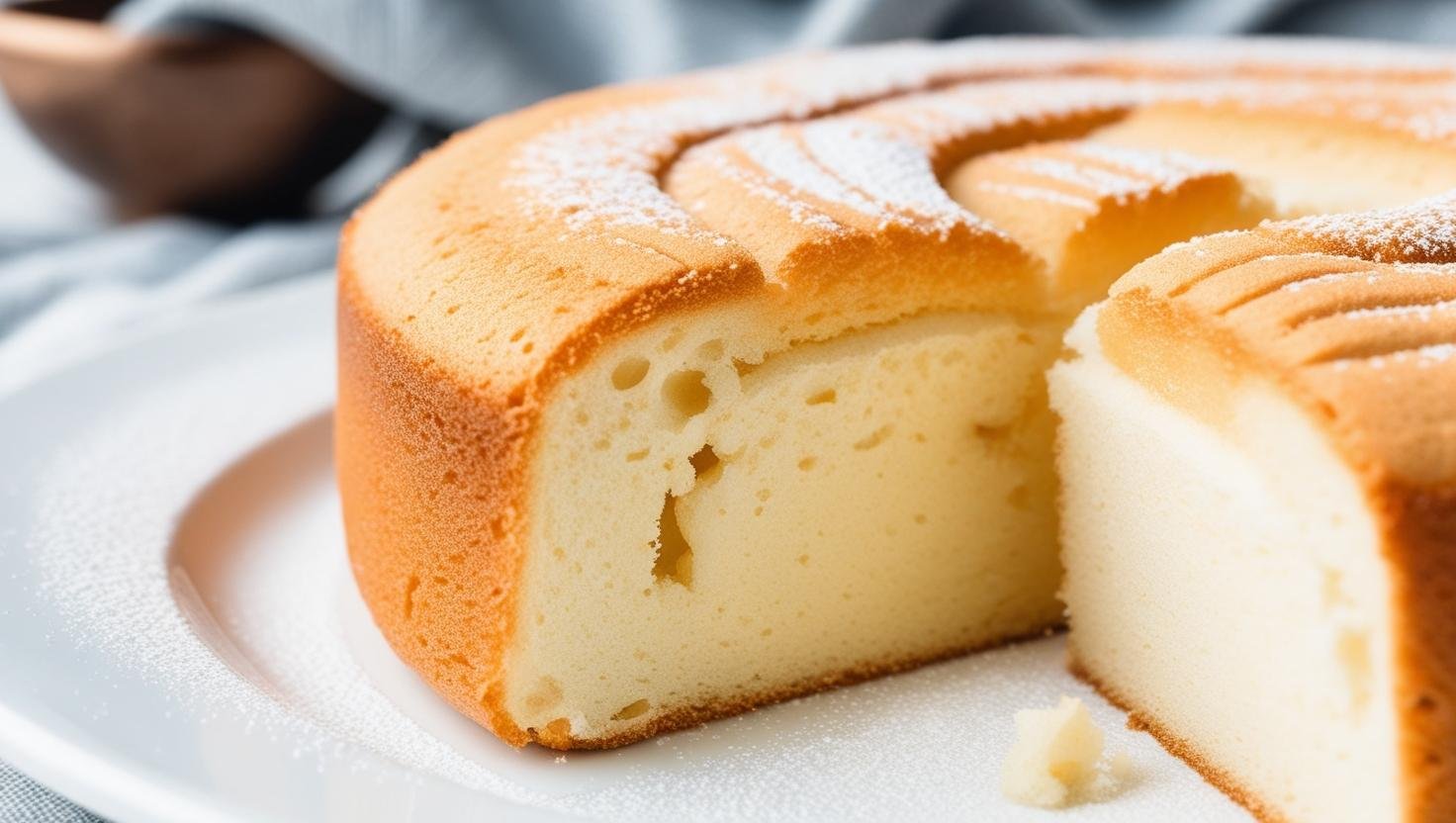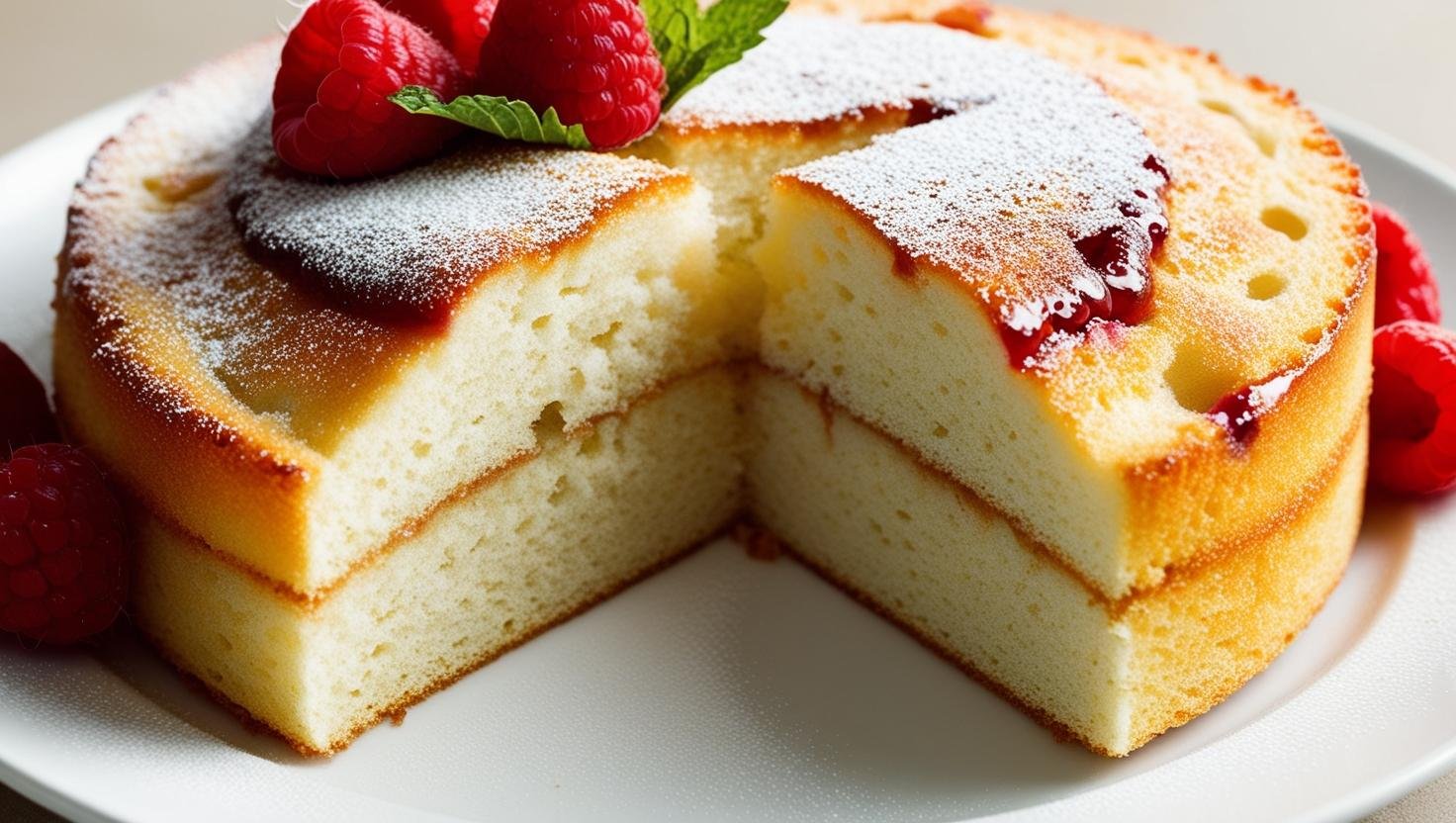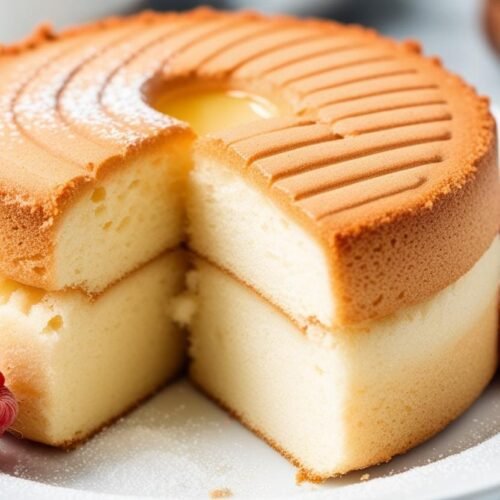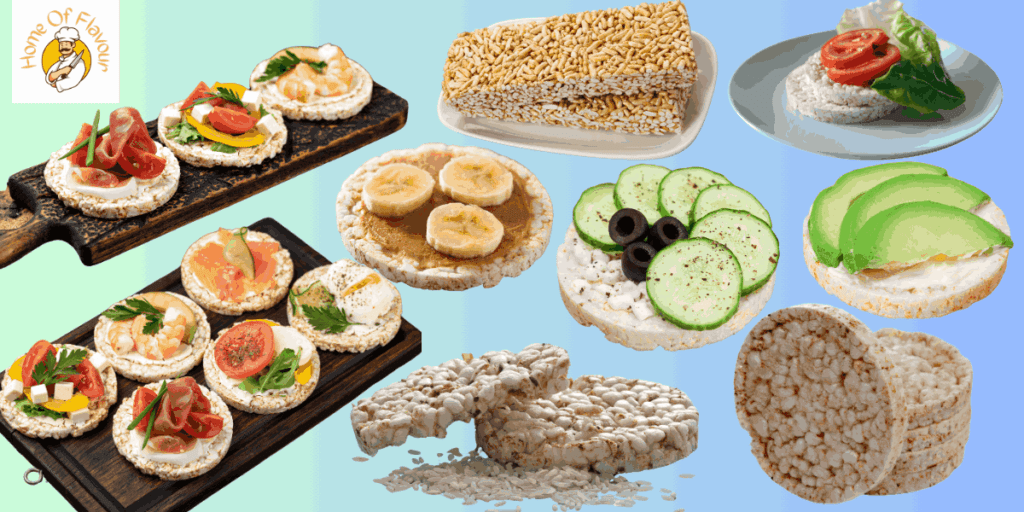There’s something magical about a fluffy sponge cake. It’s that perfect balance of light-as-air texture, gentle sweetness, and the kind of softness that melts on your tongue. It reminds me of the cakes my mother used to make on weekends—always from scratch, always with care. When I started baking myself, I quickly learned that while sponge cakes look simple, getting that perfect fluffiness takes a little know-how.
Over time, I’ve picked up some techniques that changed everything for me. No more heavy, sunken sponges or dry slices. This fluffy sponge cake recipe is the one I turn to every time I want something elegant yet comforting—and today, I’m sharing it with you.
Whether you’re baking for a birthday, afternoon tea, or just because you crave something sweet and light, this step-by-step guide will help you get that soft, cloud-like sponge every time.

🍰 Ingredients You’ll Need
Dry Ingredients:
- 100g cake flour (or 85g all-purpose flour + 15g cornstarch)
- 1 tsp baking powder
- 60g white sugar
- 20g powdered sugar
Wet Ingredients:
- 4 large eggs, separated
- 40ml vegetable oil or canola oil
- 40ml warm water
- 1 tsp vanilla extract or vanilla essence
Optional for Serving:
- Raspberry jam, whipped cream, fresh strawberries
- A dusting of icing sugar or powdered sugar
🧂 Ingredient Substitutions and Customizations
Whether you’re out of a specific ingredient or want to make your sponge cake suit different dietary needs, there are easy ways to customize this recipe without sacrificing its signature fluffiness.
Common Substitutions:
- Cake Flour Alternative:
Use 85g of all-purpose flour plus 15g cornstarch if cake flour isn’t available. This blend helps keep the cake soft and light. - Sugar Swap:
If you’re out of powdered sugar, pulse granulated sugar in a blender until fine. For a less sweet option, reduce the sugar slightly—but be mindful that sugar also helps with moisture and structure. - Neutral Oil Options:
Swap vegetable oil with canola oil or even light olive oil. Avoid strong-flavored oils like coconut unless you want them to shine through. - Dairy-Free Version:
This recipe is already dairy-free, but make sure your whipped topping (if used) is plant-based, such as coconut whipped cream.
Fun Add-Ins:
- Add lemon zest or a few drops of almond extract for a flavor twist.
- Swirl a spoonful of jam directly into the batter before baking for a marbled effect.
- Fold in a handful of freeze-dried berries for color and tartness.
Tip: Keep any additions light so the batter doesn’t lose its airy structure.

👩🍳 Step-by-Step: How to Make a Fluffy Sponge Cake
Step 1: Preheat and Prepare the Tin
Start by preheating your oven to 160°C (320°F) for a fan oven or 175°C (347°F) for a standard oven.
Line an 8×3 inch cake tin with parchment paper only at the base—don’t grease the sides. This helps the cake rise properly.
Pero tip: I used to grease the sides out of habit, but I always ended up with cakes that slipped down and lost height. Leaving the sides clean makes a huge difference.
Step 2: Separate the Eggs
Carefully separate 4 large eggs into two clean bowls—one for yolks, one for egg whites. Make sure no yolk gets into the whites, or they won’t whip correctly.
Let them sit at room temperature for about 10 minutes before beating. This helps the whites whip more easily and gives a better texture.
Step 3: Beat the Egg Whites
Using a hand mixer or stand mixer, beat the egg whites on low speed until foamy. Gradually add the white sugar as you increase to medium-high speed. Continue until you get stiff peaks—the whites should be glossy and firm.
This step is the heart of the fluffiness. Take your time. The first time I got it right, I remember doing a little victory dance in my kitchen—it was that exciting.
Step 4: Whip the Yolks and Mix the Batter
In a separate bowl, beat the egg yolks, powdered sugar, vanilla extract, and warm water until thick and pale. The mixture should fall in ribbons when you lift the beater.
Next, sift in the cake flour and baking powder. Gently fold everything together with a spatula—not a whisk or spoon. Then slowly add the vegetable oil and fold until smooth.
Step 5: Fold in the Egg Whites
Add the whipped whites in three parts into the yolk-flour mixture. Fold gently after each addition. This keeps the batter airy and helps maintain the structure you’ve built.
Don’t rush here. I’ve ruined cakes in the past by mixing too fast at this stage. Think of it like folding a blanket—slow, careful, and with love.
Step 6: Bake and Cool
Pour the batter into your prepared tin. Tap the tin once on the counter to remove any large air bubbles.
Bake for 35–40 minutes in the center of the oven. The cake is done when a toothpick inserted into the center comes out clean, and the top springs back when touched.
Once baked, turn the tin upside down onto a cooling rack (if your tin allows) and let it cool completely before removing. This helps prevent the sponge from collapsing as it cools.
🍓 Serving Ideas: How to Make It Even More Special
This fluffy sponge cake is incredibly versatile, making it perfect for both everyday treats and special occasions. Here are a few of my favorite ways to serve it:
1. Classic Victorian Style
Slice the cake into two even layers. Spread a generous layer of raspberry jam and whipped cream between them. Top it off with a dusting of powdered sugar or icing sugar. Add a few fresh strawberries for a burst of color and flavor.
2. Light Fruit Cake
Layer the sponge with a mix of seasonal fruits, a dollop of whipped cream, and a touch of simple syrup brushed onto the cake for extra moisture. This version is great for summer!
3. Trifle Base
Cube leftover sponge and layer it in a glass bowl with jam, custard, fruit, and cream for a quick and elegant dessert.
4. Frosted Celebration Cake
If you’re making a birthday or celebration cake, this sponge holds up beautifully under frosting. Use an offset spatula for a smooth finish, and decorate with fruit, flowers, or sprinkles.
✨ Final Thoughts: A Cake Worth Mastering
There’s something so satisfying about pulling a golden, risen sponge cake out of the oven. Every time I bake this recipe, I’m reminded why I love it—it’s soft, it’s simple, and it brings joy in every bite.
Whether you’re just getting into baking or you’ve been at it for years like me, this fluffy sponge cake recipe is one of those foundational bakes that never goes out of style. With just a bit of patience and care, you can create a cake that’s not only light and moist, but also full of pride and homemade love.
Try it once, and I bet you’ll find yourself coming back to it again and again.
Fluffy Sponge Cake Recipe (FAQs)
1. Can I just use regular flour if I don’t have cake flour?
Yes, you can! If you don’t have cake flour, just use all-purpose flour mixed with a bit of cornstarch—specifically 85g of all-purpose flour and 15g of cornstarch. That combination helps create the same light texture you’d get with cake flour.
2. Why did my sponge cake sink in the middle after baking?
That’s a common issue. It usually happens if the cake was underbaked, if the oven door was opened too early, or if the batter was overmixed, which deflates the air. Make sure to bake it fully (test with a toothpick) and fold your ingredients gently.
3. Can I make this sponge cake the day before I need it?
Definitely. I often bake it a day ahead! Just keep it in an airtight container at room temperature, and it stays soft for 2–3 days. If you’re not using it right away, you can even freeze it (just make sure it’s unfilled and well wrapped).
4. How do I keep the cake from drying out?
One simple trick I love is brushing the sponge with a bit of simple syrup (equal parts sugar and boiling water). It adds a little moisture without changing the taste, especially helpful if you’re layering or storing it.
5. Can I use butter instead of oil in the recipe?
You can, but just know that butter gives a slightly denser texture, while vegetable oil keeps the sponge lighter and fluffier. For that melt-in-your-mouth feel, I always stick with oil.

Fluffy Sponge Cake Recipe
Ingredients
- Dry Ingredients:
- 100 g cake flour or 85g all-purpose flour + 15g cornstarch
- 1 tsp baking powder
- 60 g white sugar
- 20 g powdered sugar
- Wet Ingredients:
- 4 large eggs separated
- 40 ml vegetable oil or canola oil
- 40 ml warm water
- 1 tsp vanilla extract
- Optional Toppings:
- Whipped cream
- Raspberry jam
- Fresh strawberries
- Icing sugar or powdered sugar for dusting
Instructions
- Step 1: Preheat and Prepare
- Preheat oven to 160°C (320°F) for a fan oven, or 175°C (347°F) for a conventional oven.
- Line the base of an 8x3 inch round cake tin with parchment paper. Do not grease the sides.
- Step 2: Separate the Eggs
- Carefully separate the egg whites and yolks into two clean bowls.
- Let them sit at room temperature for 10 minutes.
- Step 3: Whip Egg Whites
- Using a mixer, beat the egg whites on low speed until foamy.
- Gradually add the white sugar while increasing to medium-high speed.
- Beat until stiff peaks form.
- Step 4: Beat Yolks and Combine Dry Ingredients
- In another bowl, beat the egg yolks, powdered sugar, vanilla extract, and warm water until pale and thick (ribbon stage).
- Sift in the cake flour and baking powder, folding gently with a spatula.
- Step 5: Add Oil and Fold in Egg Whites
- Gently fold in the vegetable oil until incorporated.
- Add the whipped egg whites in three additions, folding carefully after each to maintain air in the batter.
- Step 6: Bake
- Pour batter into the prepared tin.
- Tap the tin lightly on the counter to release air bubbles.
- Bake for 35–40 minutes, or until a toothpick inserted in the center comes out clean.
- Step 7: Cool and Serve
- Invert the cake (while still in the tin) onto a cooling rack.
- Allow it to cool completely before removing.
- Slice and serve with jam, cream, and fresh fruit, or dust with powdered sugar.
Video
Notes
🥶 Storage & Reheating Tips
- Store sponge cake (unfilled) in an airtight container at room temperature for up to 3 days.
- Refrigerate if filled with cream, but consume within 48 hours.
- For longer storage, wrap the cooled sponge tightly and freeze for up to 1 month.
- To reheat (if unfrosted): bring to room temperature or microwave for 5–10 seconds for a soft texture.


